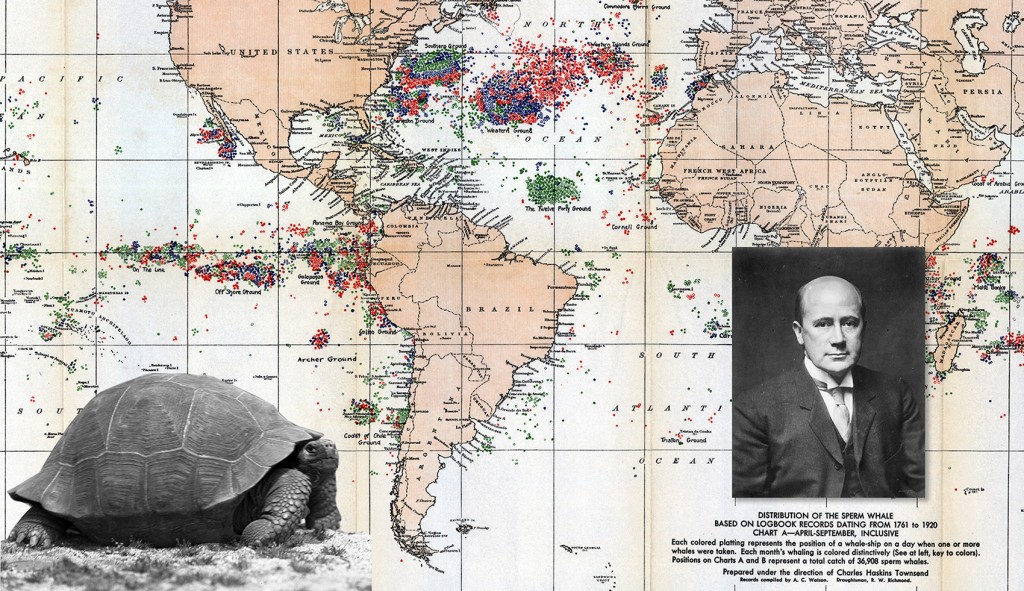
August 6, 2020
Townsend and the Whale-Tortoise Connection
- as seen by -
 John Delaney
John Delaney
When Charles Haskins Townsend, (above, right) the former Director of the New York Aquarium, started searching through old whaling ship log books in the mid 1920s, his goal was to compile data for maps on the largely unknown distributions and movements of whales, marine giants brought to the brink of extinction by commercial whaling fleets. He recorded and plotted the locations of more than 50,000 humpback, right, bowhead, and sperm whales taken between the years of 1761-1920; in so doing, he uncovered a grim truth about another group of imperiled giants: Galapagos tortoises (above, left).
Townsend discovered that many ships sailing through the Pacific in search of great whales would regularly stop in the Galapagos Islands for giant tortoises. The reptiles had become a desirable food source for sailors. The ponderous reptiles could be kept alive on ship for several months until the time came to slaughter them for fresh meat. Between 1831-1868—the heyday of American whaling—Townsend found that 79 whaling vessels had made 189 visits to the islands, taking more than 13,000 tortoises as food when they departed. The actual number of tortoises taken by whalers and other sailors, he suspected, was probably much higher.
After making the whaling-giant tortoise connection, Townsend led expeditions to the Galapagos in 1928 and 1933 to save what was left of the archipelagos’ terrestrial giants. An extensive search by Townsend and his team located nearly 200 giant tortoises. The animals were shipped to more than a dozen locations around the world in one of the first attempts to establish a breeding program for these threatened tortoises. Nearly a century later, the descendants of tortoises collected by Townsend from Isabela Island remain at locations such as WCS’s Bronx Zoo, and one animal collected during Townsend’s expeditions, thought to be more than 100 years in age, was sent from the San Diego Zoo back to the Galapagos to help repopulate the island of Española.
EDITOR’S NOTE: The Wildlife Conservation Society is celebrating 125 years of saving wildlife and wild places in 2020. WCS was founded as the New York Zoological Society in 1895. Wild View will feature regular posts on the history of the Society’s photography and other events throughout the year.
With this post, we bid farewell to John Delaney, who will be leaving WCS this week after 22 years in our Communications Department. We wish John all the best on the road ahead.
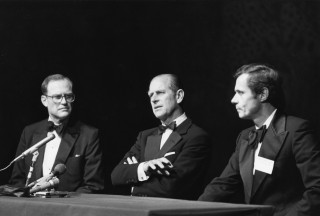
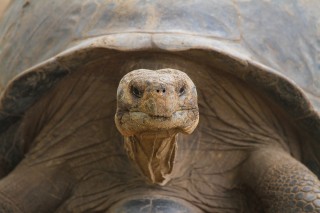
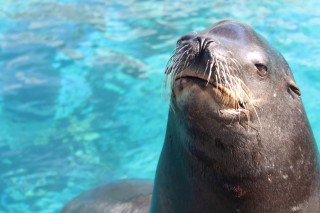
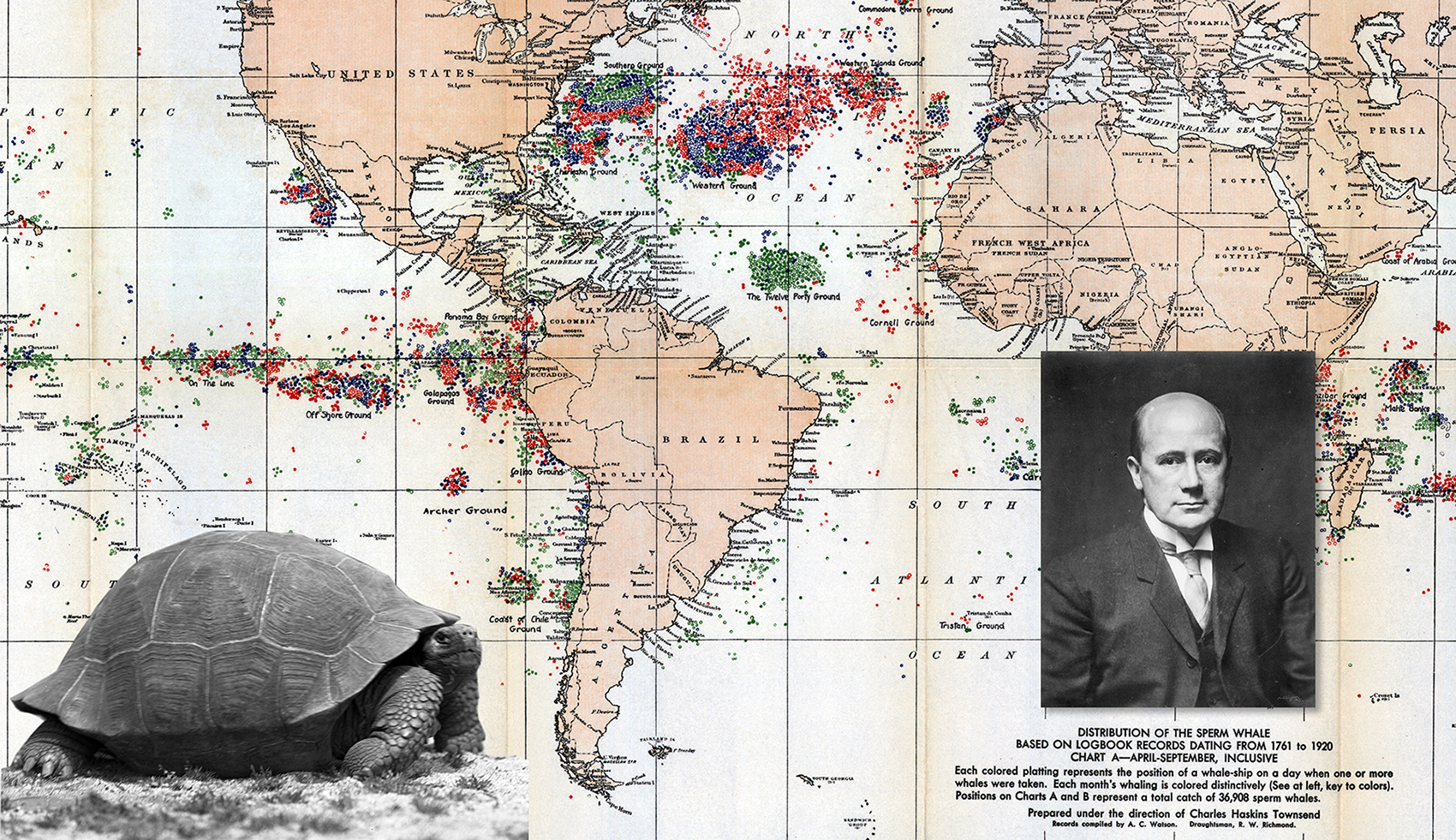
Leave a Comment